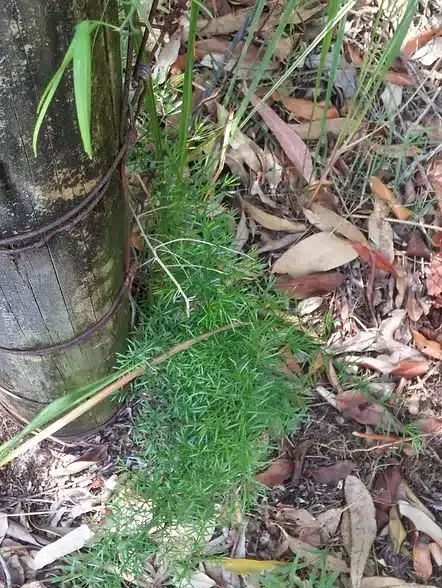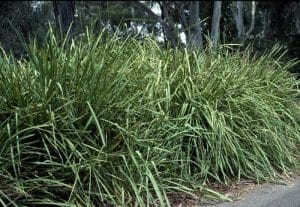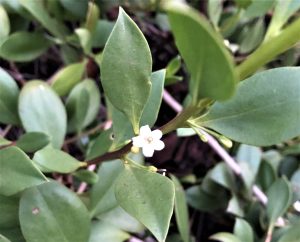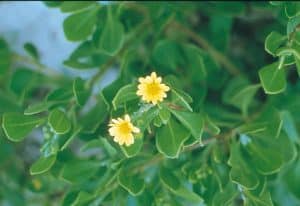TUCKEROO CANOPY
The large canopy trees here are Tuckeroos and there are many saplings of a variety of species growing up towards the light.
In 1998 there had been a gap in the canopy here for more than twenty-five years and a number of the canopy trees had ‘salt burn’. Now, the gap has closed, and the rainforest is protected from salt-laden winds. The old dunes are now stable whereas previously they were quite mobile.
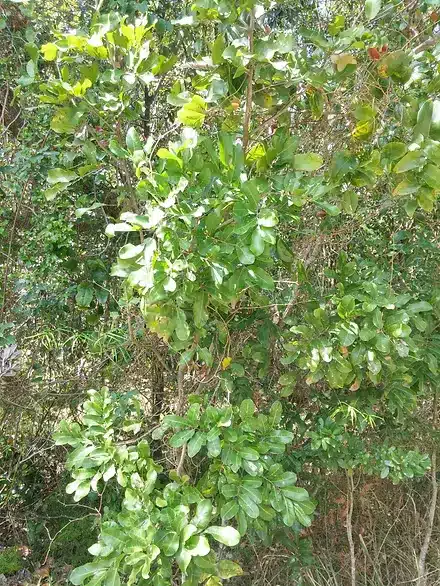
EFFECTS OF WEEDING
Progressive weed control activities by volunteers and contractors in this rainforest since 1995 have assisted this successful rainforest restoration. Weeds in the rainforest such as Asparagus weed, Cassia and Bitou Bush, smother seedlings and reduce the rainforest’s chance of recovering when the canopy is damaged.
ROUND ASPARAGUS WEED
Previously, Ground Asparagus weed was thigh high and in some places the Climbing Asparagus weed was chest high and climbing into the tree canopies. Asparagus weed generally takes a couple of years to flower and seed so it is important to remove it when it is young so it doesn’t set seed. Of course, mature plants also need to be removed.
